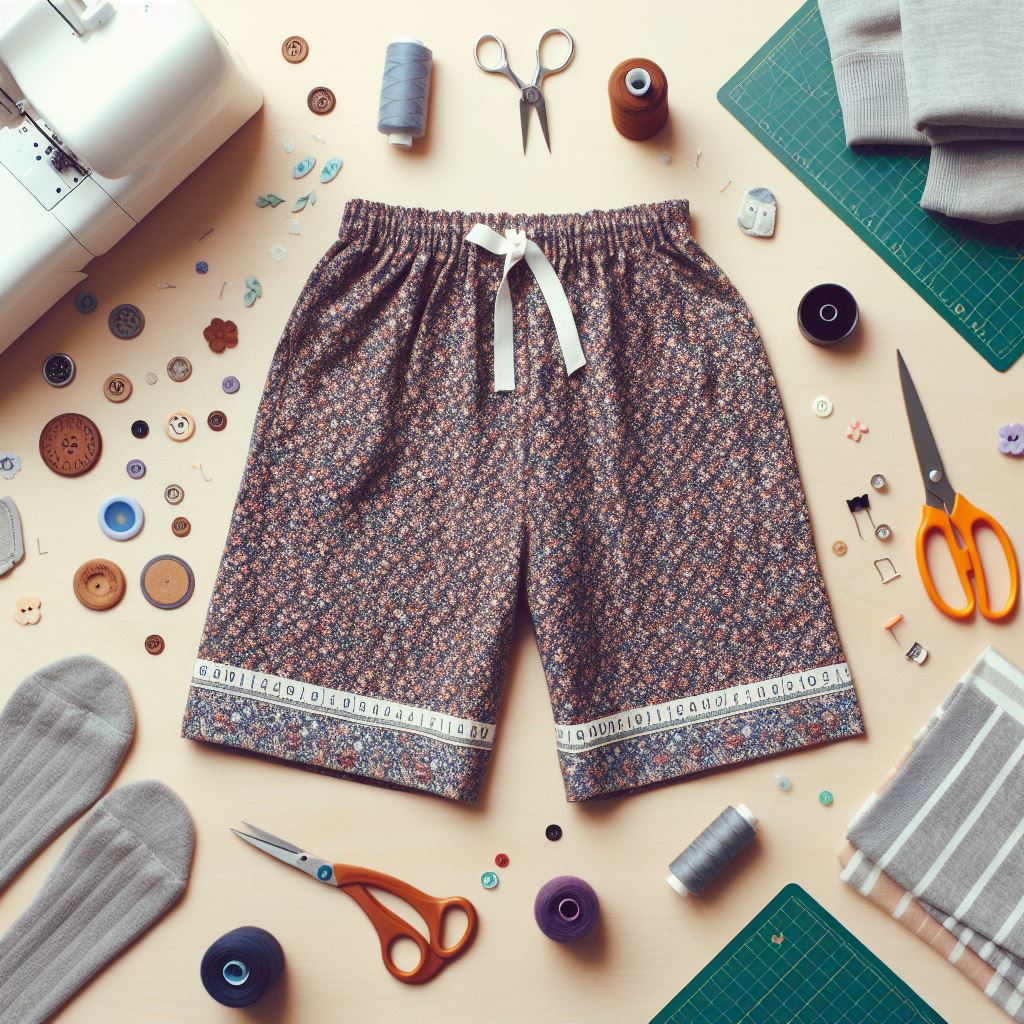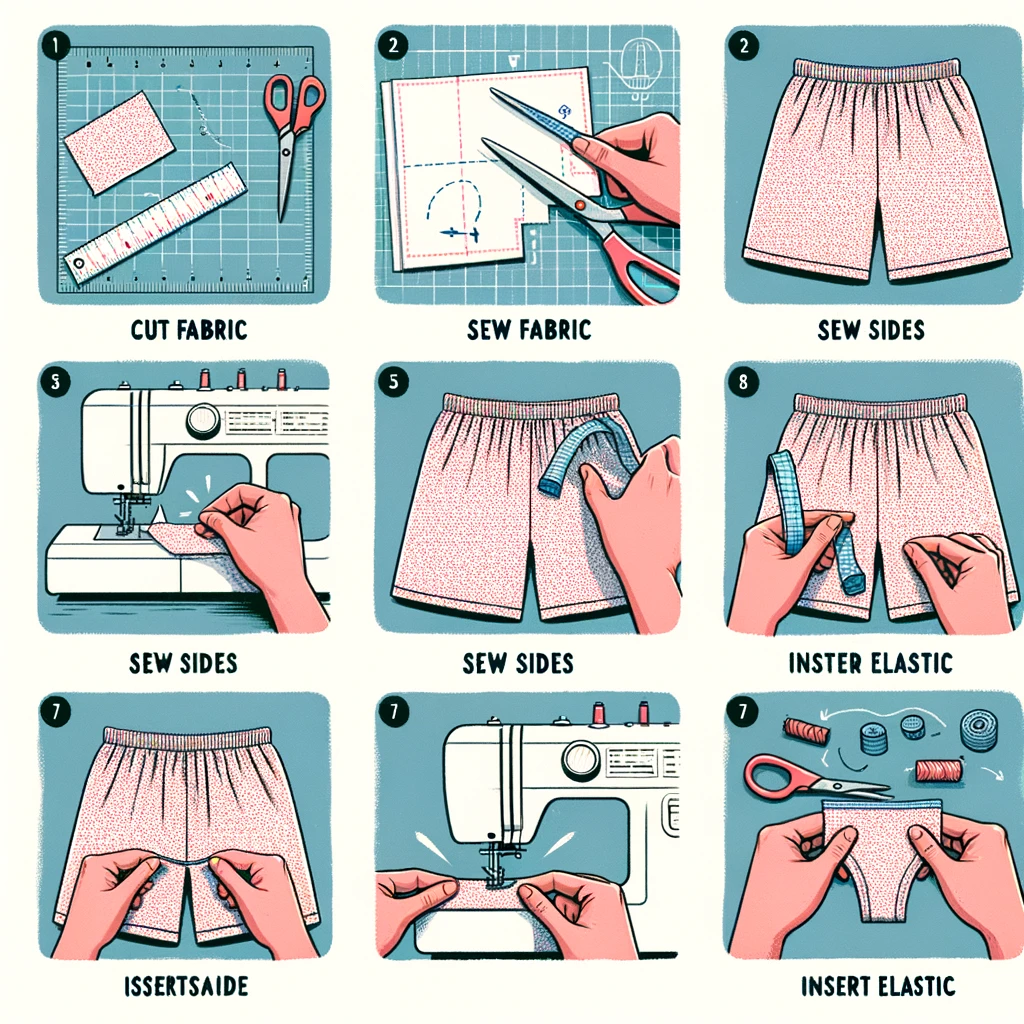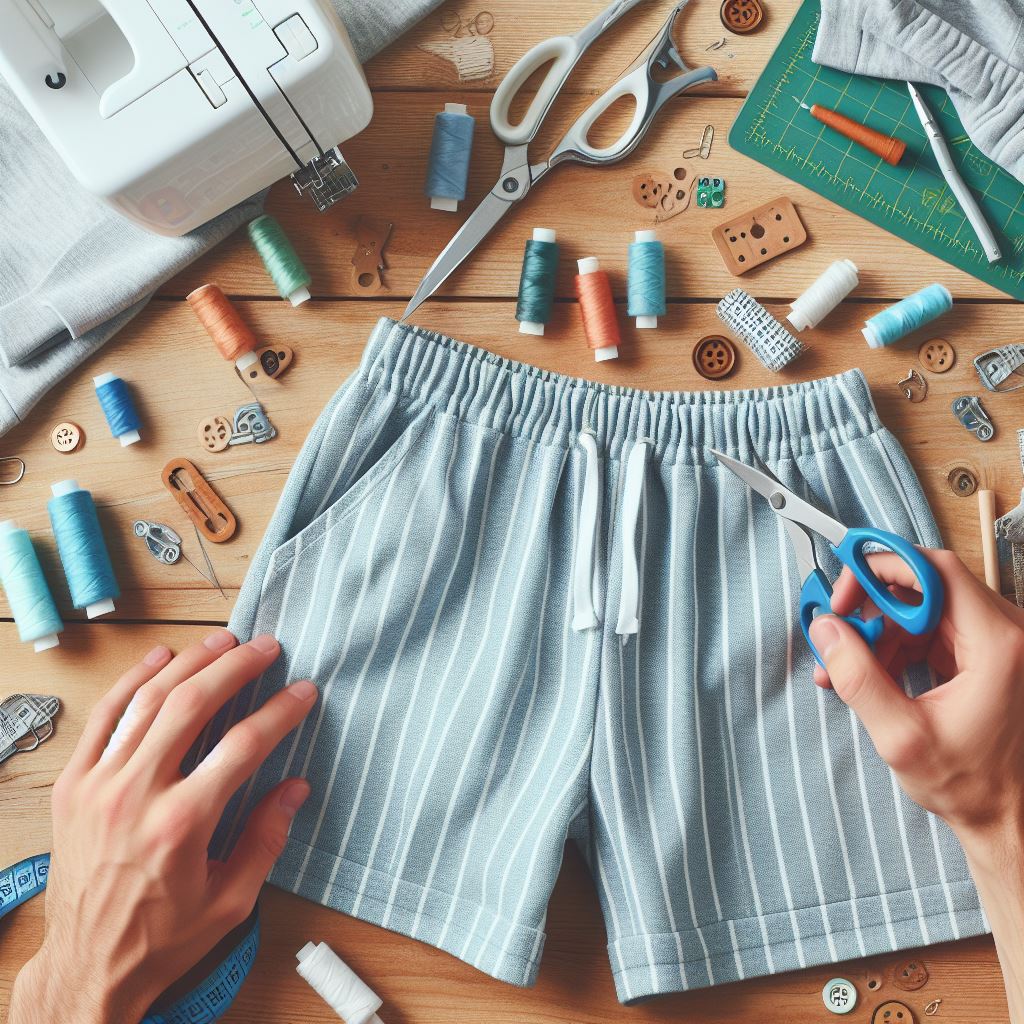Sewing pajama shorts is an enjoyable and practical project, perfect for beginners and experienced sewists alike. This comprehensive guide will take you through the entire process, from selecting the right materials to putting the finishing touches on your handmade garment. By the end of this article, you’ll have all the information you need to create a comfortable, custom pair of pajama shorts.
Supplies to Sew Shorts
Before you begin, ensure you have all the necessary supplies. Here’s a basic list:
- Fabric: Choose a comfortable, breathable fabric suitable for sleepwear, such as cotton, flannel, or jersey knit. You’ll need approximately 1 to 1.5 yards (0.9 to 1.4 meters) depending on the size and pattern.
- Sewing Machine: A basic sewing machine capable of straight and zigzag stitches.
- Thread: Matching or contrasting thread, depending on your design preference.
- Elastic: Waistband elastic, usually 1 to 1.5 inches wide, to fit the waist measurement plus an inch for overlap.
- Pins and Needles: Pins for holding fabric pieces together and needles for both hand sewing (for finishing touches) and your sewing machine.
- Scissors: Fabric scissors for cutting fabric and smaller scissors for trimming thread.
- Measuring Tape: For taking body measurements and ensuring pattern accuracy.
- Pattern Paper: If drafting your own pattern or printing a pattern from online.
- Safety Pin: To thread the elastic through the waistband.
- Iron and Ironing Board: For pressing fabric before and after sewing to ensure a professional finish.

How to Get the Pattern?
There are several ways to obtain a pajama shorts pattern:
- Purchase a Pattern: Look for sewing patterns online or at your local fabric store. Patterns from companies like Simplicity, McCalls, and Burda are widely available and offer a range of sizes and styles.
- Download a Free Pattern: There are numerous free pajama shorts patterns available online. Websites like Pinterest or sewing blogs often share links to free patterns that you can print at home.
- Make Your Own Pattern: You can create a custom pattern by tracing around an existing pair of shorts that fit well, leaving extra space for seam allowances, or by using basic measurements to draw a simple pattern. This method allows for a custom fit and can be a good learning experience.

Choosing Your Fabric
Fabric Type: Look for lightweight, breathable fabrics that will be comfortable to wear. Cotton, linen, jersey knit, and flannel are all excellent choices, depending on the season.
Fabric Amount: You’ll typically need 1 to 1.5 yards of fabric, depending on the width of the fabric and the size of the shorts.
Preparing Your Pattern and Fabric
Selecting a Pattern: You can find pajama short patterns online, in sewing books, or at your local fabric store. Choose a pattern that matches your sewing skill level and style preferences.
Laying Out and Cutting: After washing and ironing your fabric to pre-shrink it, lay out your pattern pieces according to the instructions. Use fabric scissors or a rotary cutter for clean, precise cuts.
Sewing Your Pajama Shorts
- Sewing the Sides: Pin the front and back pieces together, right sides facing, and sew along the side seams.
- Creating the Waistband: Fold over the top edge to form a casing for the elastic. Sew around the edge, leaving a small opening to insert the elastic.
- Inserting the Elastic: Measure the elastic around your waist, cut it to size, and thread it through the casing using a safety pin. Sew the ends of the elastic together, then close the opening in the waistband.
- Hemming the Legs: Turn up the bottom edge of each leg to your desired length and sew around to hem.

Customizing Your Pajama Shorts
- Adding Pockets: If your pattern doesn’t include pockets, you can easily add them by sewing pocket pieces to the front pieces before assembling the shorts. You can check How To Sew Shorts With Pocket to properly add pockets.
- Decorative Elements: Consider adding lace trim, decorative buttons, or embroidery to personalize your pajama shorts.
How to Sew Pajama Shorts from Pajama Pants?
If you’re starting with a pajama pants pattern or want to convert pajama pants into shorts, follow these steps:
- Modify the Pattern or Pants: If using a pants pattern, shorten the length to your desired shorts length plus hem allowance (usually 1 to 2 inches). If converting existing pants, measure and mark the desired length directly on the pants, then cut, leaving extra for the hem.
- Cut Your Fabric: Lay out your fabric on a flat surface, fold it in half with right sides together, and place your pattern on top. Pin the pattern in place and cut around it carefully. You should have two pieces for the front and two for the back of the shorts.
- Sew the Sides and Crotch: Pin the front pieces together at the crotch seam and sew. Repeat with the back pieces. Then, open up the pieces and pin the front to the back along the side seams, sewing them together.
- Sew the Inner Leg Seams: Match the inner leg seams of the front and back, pinning them together, and sew from the bottom of one leg across to the bottom of the other.
- Create the Waistband: Fold the top edge of the shorts down to form a casing for the elastic, leaving an opening to insert it. Sew around the edge, close to the fold, to create the casing.
- Insert Elastic: Use a safety pin attached to the end of the elastic to thread it through the casing. Once through, adjust the elastic to fit comfortably around the waist, then sew the ends of the elastic together and close the opening in the casing.
- Hem the Shorts: Fold the bottom edge of each leg up to the inside, press with an iron, and pin in place. Sew the hem close to the edge, securing it all around.
- Final Touches: Trim any loose threads and press your shorts with an iron for a neat finish.

With these steps, you can craft a comfortable and personalized pair of pajama shorts. Whether you’re a beginner or have some sewing experience, this project is a great way to practice your skills and create something unique and practical.
Also read: how to read fabric card holder.
Frequently Asked Questions – How to Sew Pajama Shorts
Q: What type of fabric is best for sewing pajama shorts?
A: The best fabrics for pajama shorts are soft, breathable, and comfortable against the skin. Cotton, including cotton jersey, flannel, and lightweight woven cotton, are popular choices because they are soft and breathable, making them ideal for sleepwear. Rayon and modal are also good options for a softer feel. Consider the season: flannel is warmer for winter, while lightweight cotton or jersey is perfect for summer.
Q: Can I sew pajama shorts without a serger?
A: Absolutely! While a serger can give your seams a professional finish, it’s not necessary. You can use a zigzag stitch on a regular sewing machine to finish the seams.
Q: How do I choose the right size pattern for pajama shorts?
A: To choose the right size pattern for pajama shorts, start by taking accurate body measurements, including the waist and hips. Compare these measurements to the sizing chart that comes with the pattern, which will guide you in selecting the size that best matches your measurements. If you are between sizes or have measurements that span multiple sizes, consider the fit you prefer (loose or fitted) and make adjustments to the pattern as needed. It’s often recommended to start with a muslin or trial version to adjust the fit before cutting into your final fabric.
Q: Can I make pajama shorts without a sewing machine?
A: Yes, it’s possible to make pajama shorts without a sewing machine, although it will take more time and effort. You can hand-sew the fabric using basic stitches like the backstitch for seams and the whip stitch for hems and edges. Ensure your stitches are small and even for durability, especially at the seams. Hand sewing can be a rewarding process and is a good option if you do not have access to a sewing machine. However, be prepared for the project to take longer to complete.
